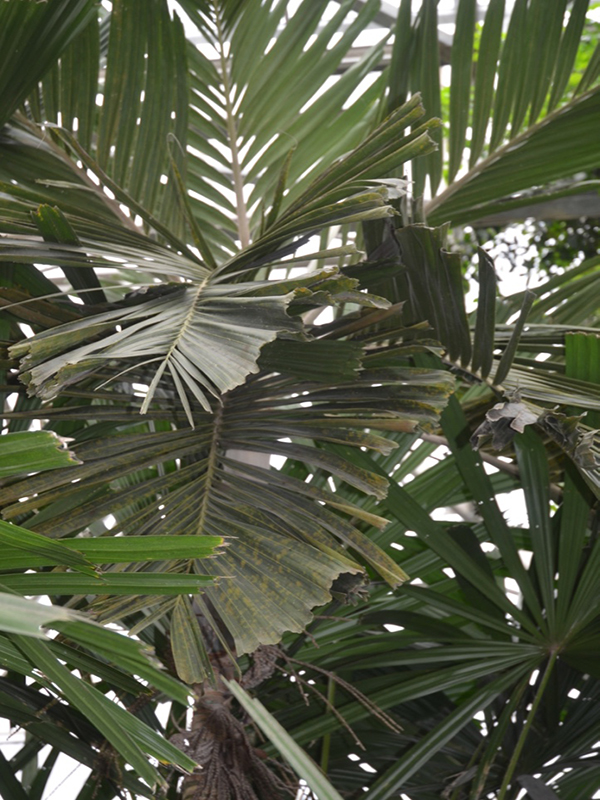
Tropicals, Woody > Polyandrococos > Polyandrococos caudescens > Polyandrococos caudescens
Polyandrococos caudescens
Buri Palm
Origin: Eastern Brazil.
| Family |
| Arecaceae |
| Genus |
| Polyandrococos |
| Species |
| caudescens |
| Category |
| Tropicals, Woody |
| Type |
| Tree (evergreen) |
| Synonyms |
| Ceroxylon niveum, Diplothemium caudescens, Diplothemium pectinatum, Orania nivea, Polyandrococos caudescens, Polyandrococos pectinata |
| USDA Hardiness Zone |
| 9b - 11 |
| Canadian Hardiness Zone |
| Requires cold season protection under glass. |
| RHS Hardiness Zone |
| H3 - H1c |
| Temperature (°C) |
| - 3.8 - above 4.5 |
| Temperature (°F) |
| 25 - 40 |
| Height |
| 10-15 m |
Photographs
Description and Growing Information
Flowering Period
| General Description |
| A single-stemmed, evergreen palm tree, capable of growing eventually to a height of about 15 metres. The unbranched stem can be 15 - 25 cm in diameter, crowned with a rosette of 10 - 15 leaves that can be 2 - 3 metres long. In the far north of its range, especially on infertile soils, the plant often has a short, subterranean stem instead of an upright stem. |
| Cultivation |
| Prefers a sunny, well drained position in poor coastal sands. Established plants are drought tolerant. A slow-growing plant when very young, speeding up somewhat once planted out. |
| Growth |
| Slow |
| Habitat |
| Atlantic rainforests, mainly in the more open, secondary growth areas. |
| Bark/Stem Description |
| Rough and solitary natured, and reaching over 15 m at 25 cm wide, usually covered in old leaf bases. |
| Leaf Description |
| Pinnate, feather shaped, medium sized 2.5 - 3 m, and the undersides of the leaflets are silver. This palm holds its leaves very upright. |
| Flower Description |
| A pendulous, solitary, interfoliar spike, unbranched, with an elongated peduncle and a tubular prophyll. |
| Fruit Description |
| Greenish-brown, almost globose fruit is up to 45 mm long and 35 mm in diameter, containing a single seed. |
| Notable Specimens |
| Queen Sirikit Botanic Garden, Mae Rim District, Chiang Mai Province, Thailand. |
| Propagation |
| By seed. |

